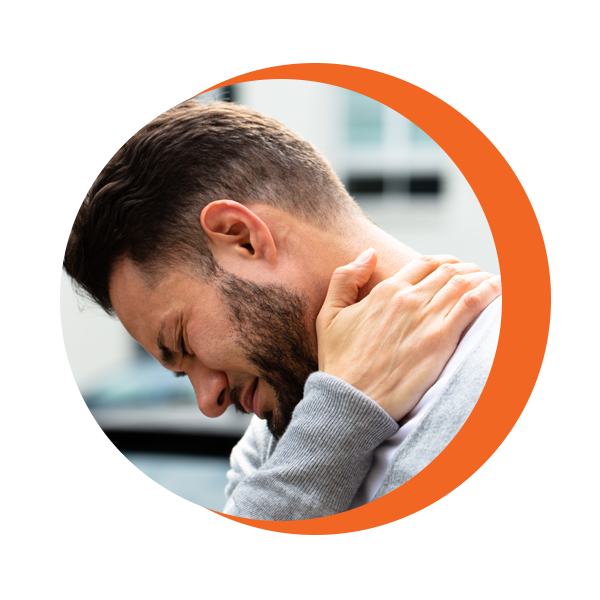Neck pain is among the most common forms of upper body discomfort. Whether from improper form at the gym, sleeping on it wrong or staring at the computer for hours on end, the neck is one area of the body that can easily get tweaked or stiff.

The temporomandibular joint, commonly abbreviated to TMJ, is the joint that connects your mandible to your skull. This joint, located on both sides of your jaw, acts as a sliding hinge to enable your jaw to open and close, which allows you to talk and eat.
TMJ disorders are when you experience tenderness, facial pain and difficulty moving the joint. These disorders are fairly common, as almost ten million Americans suffer from TMJ disorders each year. Some risk factors of developing a TMJ disorder include:
The symptoms of TMJ disorders vary based on the severity and causes of the condition. The most common symptoms of a TMJ disorder are:
In a majority of cases, TMJ disorders can be treated with daily habits, like eating soft foods, using ice, reducing stress and jaw-stretching exercises to improve mobility. Sometimes, pain medications or stabilization splints may be necessary to prevent teeth grinding.
Neck pain is a fairly common condition that is typically caused by poor posture or overuse. Neck pain can range from minor to severe and can usually be treated by conservative methods. It is diagnosed by symptoms like tenderness along the cervical spine, decreased range of motion in the neck and loss of reflexes. You should seek medical care immediately if your neck pain is accompanied by numbness or loss of strength in your arms or hands.
Along with incorrect posture, neck pain can be caused by:
Neck pain can usually be successfully treated with ice and heat therapy, stretching, physical therapy, pain medications, or corticosteroid injections.
Whiplash is an injury to the neck, characterized by a sudden back-and-forth movement caused by a great force. This injury is most common following a rear-end car collision, but can also occur in sports accidents, physical abuse, or other kinds of trauma. Whiplash occurs because the muscles and ligaments in your neck overextend beyond their normal range of motion. Symptoms of whiplash may not present themselves until a few days after the injury and can look like:
To alleviate whiplash symptoms, it will be important to complete physical therapy with certified physical therapists to rebuild strength and flexibility in your neck. With improved posture and relaxation techniques, your neck muscles will be able to fully recover.
If you are experiencing pain in either your head or neck, fill out the form below and consult with us so we can help alleviate your pain as soon as possible!
Fill out the form below and we will get back to you shortly on scheduling your appointment date!

CONTACT:
833-4 WE HEAL (833-493-4325)
Fax: 833-918-2233
info@reenvisionpt.com
WORKING HOURS:
Monday – Friday
8:00AM – 5:00PM
Please note that the link will come from Phreesia, one of our partner companies.